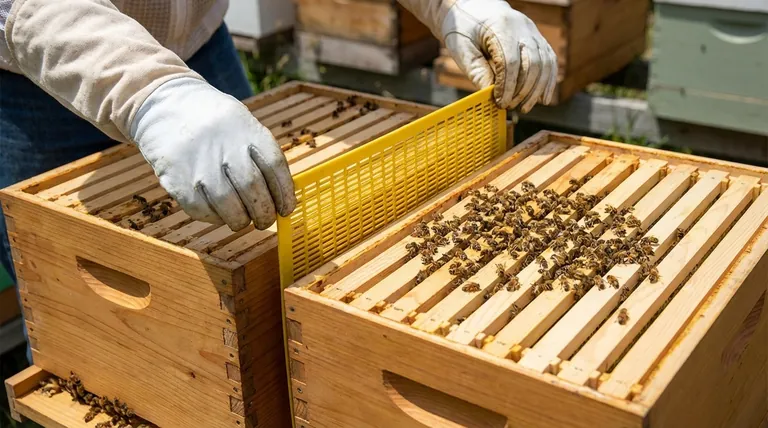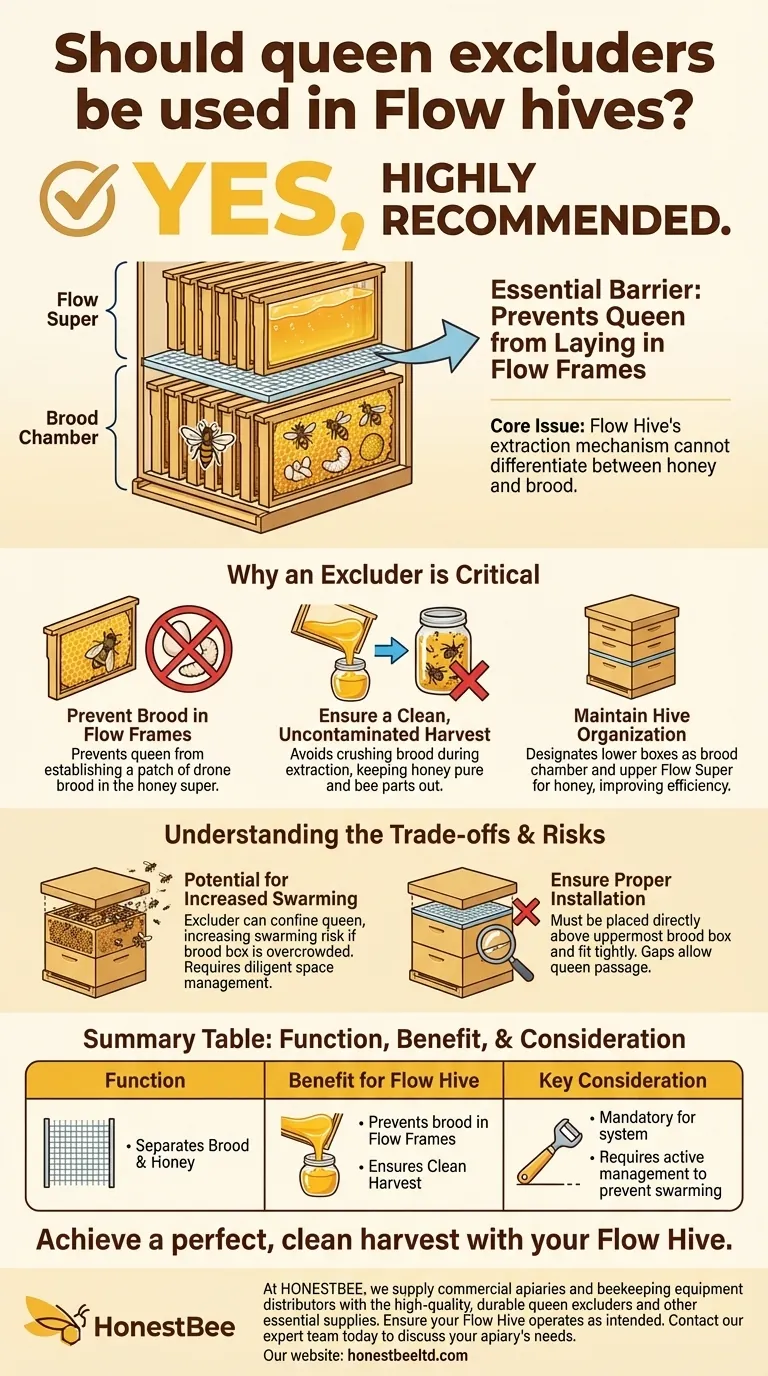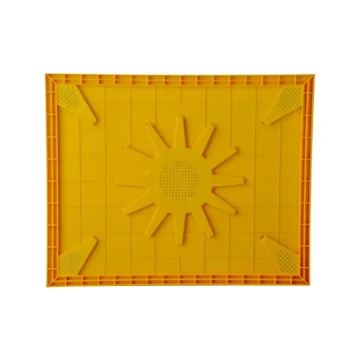Yes, using a queen excluder with a Flow Hive is highly recommended. While optional in traditional beekeeping, it is a critical component for the Flow system to function as intended. The primary reason is to prevent the queen from laying eggs in the Flow Frames, which would be crushed during harvest, contaminating your honey and killing developing bees.
The core issue is that the Flow Hive's extraction mechanism cannot differentiate between honey and brood. A queen excluder is the essential tool that separates the queen's brood chamber from the honey super, ensuring the system works correctly and protecting both your honey quality and your bees.

Why an Excluder is Critical for Flow Hives
Flow Hives operate on the same beekeeping principles as any standard hive, but their unique harvesting method introduces a specific requirement. The need to keep the queen out of the honey super becomes non-negotiable.
Preventing Brood in the Flow Frames
The cells of the Flow Frames are large enough for the queen to lay eggs, specifically drone brood. Without an excluder, it is very likely she will move into the super and establish a patch of brood.
This directly interferes with the purpose of the Flow Super, turning it from a honey storage area into an extension of the brood nest.
Ensuring a Clean, Uncontaminated Harvest
The defining risk of forgoing an excluder is crushing brood during extraction. When you activate the Flow key, the mechanism splits the cells to let honey drain out.
Any larvae or pupae inside those cells will be crushed in the process. This introduces bee parts and fluids into your honey, compromising its quality and cleanliness.
Maintaining Hive Organization
A queen excluder enforces a clear structure within the hive. It designates the lower boxes as the brood chamber for raising young bees and the upper Flow Super exclusively for honey storage.
This separation helps the colony function more efficiently and makes your management tasks predictable and simple. You know exactly where to look for eggs and where to harvest honey.
Understanding the Trade-offs and Risks
While essential for a Flow Hive, a queen excluder is not a "set it and forget it" tool. It introduces factors that require attentive management to ensure the colony remains healthy and productive.
The Potential for Increased Swarming
The most significant drawback is the potential to increase swarming behavior. The excluder can create a barrier that makes the queen feel confined to the brood box.
If the brood chamber becomes overcrowded with bees, honey, and pollen, the colony may be triggered to swarm. You must be diligent about providing adequate space in the brood area to prevent this.
Ensuring Proper Installation
An improperly installed excluder is ineffective. It must be placed directly on top of the uppermost brood box and fit tightly against the hive walls.
Any gaps between the excluder and the hive body can provide just enough space for a determined queen to squeeze through, defeating its purpose. Always ensure it lies perfectly flat.
Making the Right Choice for Your Hive
Using a queen excluder on a Flow Hive is less a matter of preference and more a necessity for the system to work as designed. The decision is not if you should use one, but how you will manage the hive with one in place.
- If your primary focus is easy, clean honey harvesting: The queen excluder is mandatory to leverage the core benefit of your Flow Hive and prevent brood from being crushed.
- If your primary focus is colony health and swarm prevention: You must actively manage the brood box, ensuring the queen has ample room to lay so the excluder does not lead to overcrowding.
Ultimately, the queen excluder enables the simplicity of the Flow Hive, making it a vital part of a successful setup.
Summary Table:
| Function | Benefit for Flow Hive | Key Consideration |
|---|---|---|
| Separates Brood & Honey | Prevents queen from laying in Flow Frames | Mandatory for system to work correctly |
| Ensures Clean Harvest | Avoids crushing brood and contaminating honey | Protects honey quality and bee health |
| Maintains Hive Organization | Creates clear brood chamber and honey super | Requires active management to prevent swarming |
Achieve a perfect, clean harvest with your Flow Hive.
At HONESTBEE, we supply commercial apiaries and beekeeping equipment distributors with the high-quality, durable queen excluders and other essential supplies needed to manage Flow Hives effectively. Our wholesale-focused operations ensure you get reliable equipment that protects your investment and your bees.
Ensure your Flow Hive operates as intended. Contact our expert team today to discuss your apiary's needs.
Visual Guide

Related Products
- Professional Plastic Queen Excluder for Modern Beekeeping
- Wooden Queen Bee Excluder for Beekeeping
- Premium Wood Framed Metal Wire Queen Bee Excluder
- Metal Queen Bee Excluder for Beekeeping
- High Performance Plastic Queen Excluder for Beekeeping and Apiary Management
People Also Ask
- What are the pros of using queen excluders? Boost Honey Production & Hive Efficiency
- How do queen excluders work in terms of spacing and bee movement? A Guide to Precision Hive Management
- Why are queen excluders recommended for Flow Hives? Prevent Brood Damage for a Clean Harvest
- What are the pros of using a queen excluder? Boost Hive Control & Honey Quality
- How does a queen excluder work? Master Hive Management for Pure Honey Harvests



















